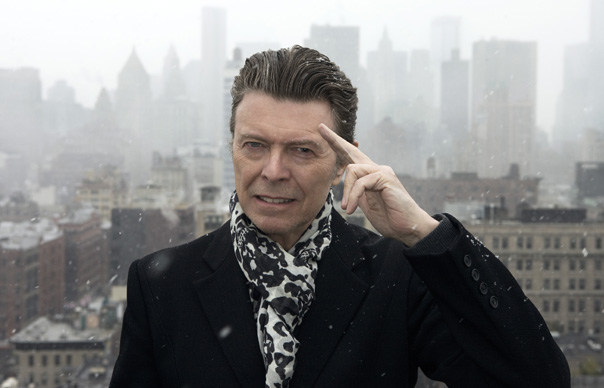The film David Bowie: The Last Five Years screens at 9pm on BBC2 tomorrow night [January 7] - the day before what would have been the singer’s 70th birthday. This is the follow-up from the BBC's previous Bowie documentary, David Bowie: Five Years, which was broadcast in 2013 and focused on the ye...
So where does this film start?
We start off in the same way as we did in the first Five Years. We showed how he was trying experimenting in the Sixties, trying a bit of this and a bit of that. In this one, we have a slightly longer section on the Reality tour and we say this was Bowie at his happiest, at his most established. He seemed perfectly content to play his back catalogue, he seemed extremely happy with his life and he seemed very happy with the band he had. And he was very willing to play almost anything from his back catalogue. We see that as a contrast to him disappearing after the heart attack he had at the Hurricane Festival. Then the film really starts. That contrast is so important because in some ways, the Bowie you see during the Reality tour is probably the closest to the real Bowie we as the public will ever see. Then he returns to the Greta Garbo of old, the JD Salinger character that is elusive and fascinating because he does not give interviews, because he is behind a veil, because he lets others speak to him.

But the focus is on the last two records and Lazarus?
The idea is that we’ll use the last two albums and the play to look back at his past. So when we look at ‘The Stars Are Out Tonight’ we look at ‘Fame’ – not just the song, but how he craved fame at one time. But ‘The Stars Come Out Tonight’ is ostensibly a song about a celebrity culture that he doesn’t enjoy and doesn’t take part in. We have some wonderful Ziggy stuff that hasn’t been seen, some beautiful stuff. We look at him achieving fame, and how he was desperate for fame, with the help of Geoff McCormick and others. Ava Cherry is in it. And some lovely stuff from Mike Garson, with some other footage which hasn’t been seen, of how he would stand in front of a mirror and watch old Sinatra and Elvis films to copy them. There is some footage of him doing moves on stage with are very Elvis like.
Where has footage come from?
I have the best archive researcher in the world! We’ve got off-cuts. There are a lot of private sources. I know a lot of where things are. We can’t get everything, because some things are very, very rare. There are going to be some rarities in this film that some people will be surprised by. But Miriam Walsh, the archive researcher, is just brilliant at finding things. Because the first one went down well, there is a huge amount of goodwill and people know we will use the material appropriately.
Do you have a favourite piece of footage?
There is footage from a photo shoot from the 90s, which is just extraordinary that will not have been seen before. We’ve got Indrani in this film, who did those photoshoots, and the stylist, GK Reid. We also spoke to all the video directors, so Floria Sigismondi, Indrani, Johan Renck for the Blackstar. Certainly Johan Renck and Floria became very close to him. Floria had done a lot of the Earthling stuff and ‘Dead Man Walking’. I think the videos are quite interesting from this period because they say a lot about him.
I always found “Valentine’s Day” quite a strange video…
Indrani’s video. It is compelling. I think she captured something about him – and the story around how she did it is quite interesting. He wanted a performance video. He’d done a big production number on ‘The Next Day’ and he’d done it on ‘The Stars Are Out Tonight’, and he wanted something much more subtle. She had to draw out of him that he was singing about a killer. I think there is something creepy about that. I think there is something creepy about all those videos actually. ‘Where Are We Now?’ is very odd. Not only is it odd in its lo-fi way, but him wanting to look as Tony Ourlser says, ‘reptilian’ and older than his age. ‘The Stars Are Out Tonight’, I find it quite hard to watch that one.



